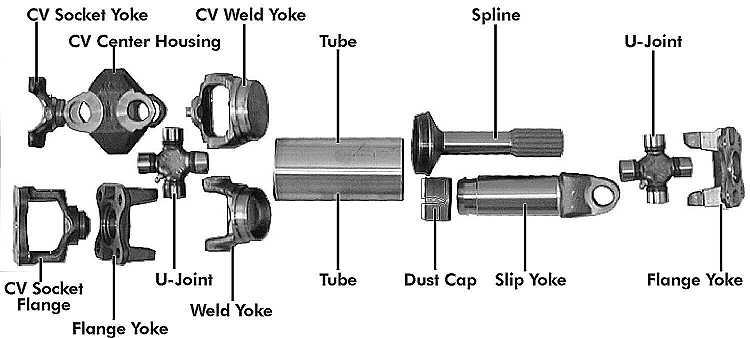This a compilation of information from Forum members. Driveline issues and troubleshooting can get very complicated and this is by no means a complete and encompassing thread. If you see errors or have key additions, please PM one of the moderators.
There are a lot of potential causes to these types of issues and they can manifest themselves as either a sound, vibration or both. There are many posts and threads in the 80's section discussing this and I have placed links to most of them at the end of this FAQ. These items are some of the most difficult things to troubleshoot and sometimes you have to take it to a shop who can install electronic ears and take it for a test drive to actually find it.
In my own situation I tried everything (Rebuilt Front Drive Shaft, Swaybar bushings, extensions, CV Drive shaft). I was convinced it was in the front end because if you took the front shaft out, the problem went away. Slee Off Road installed the ears and traced it to my rear drive shaft. Even though the problem went away when I removed the front shaft, it turned out to be the rear shaft. Turns out, both shafts needed to have the U Joints rebuilt along with being balanced.
So in my situation, had I rebuilt and balanced both shafts as part of my lift install, I would have had nothing to troubleshoot. I should state that I have a 2.5” lift with 1” spacers up front and therefore should have no driveline angle issues. Larger lifts create more potential issues relative to pinion angles and castor correction. But the first place to look is with the drive shafts.
So, what Preventative Maintenance can you do to the Shafts?
There are a lot of potential causes to these types of issues and they can manifest themselves as either a sound, vibration or both. There are many posts and threads in the 80's section discussing this and I have placed links to most of them at the end of this FAQ. These items are some of the most difficult things to troubleshoot and sometimes you have to take it to a shop who can install electronic ears and take it for a test drive to actually find it.
In my own situation I tried everything (Rebuilt Front Drive Shaft, Swaybar bushings, extensions, CV Drive shaft). I was convinced it was in the front end because if you took the front shaft out, the problem went away. Slee Off Road installed the ears and traced it to my rear drive shaft. Even though the problem went away when I removed the front shaft, it turned out to be the rear shaft. Turns out, both shafts needed to have the U Joints rebuilt along with being balanced.
sleeoffroad said:One thing I do not understand is why people are so reluctant to spend money on u-joints. Hell they are only $40 or so a piece. Most trucks have 100k plus miles on them. When you lift, just replace them with new.
I would speculate that u-joints in most cases are more neglected and worn than birfields, but everyone want to service their front axle, but on-one want to change u-joints as the first step in solving vibrations.
So in my situation, had I rebuilt and balanced both shafts as part of my lift install, I would have had nothing to troubleshoot. I should state that I have a 2.5” lift with 1” spacers up front and therefore should have no driveline angle issues. Larger lifts create more potential issues relative to pinion angles and castor correction. But the first place to look is with the drive shafts.
So, what Preventative Maintenance can you do to the Shafts?
Last edited:



